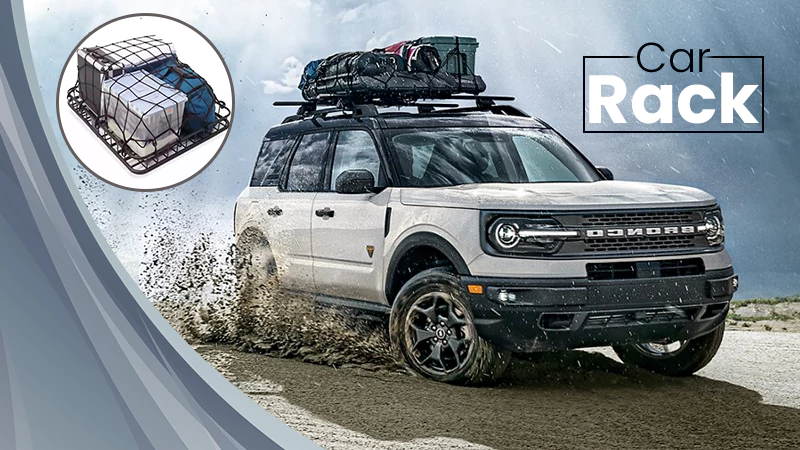How to Choose Good Tent Footprints?
A good tent can serve you for a long time, especially if you take good care of it. Even if you buy the best 6 person tent, it’s important to take good care of your tent when camping. You can do this by using tent footprints to cover the ground under your tent: the groundsheet. The groundsheet will make your tent last longer and it prevents a lot of work when cleaning it.
This article overviews what tent footprints are, what are their types and benefits. Let’s check it out!
Tent Footprints: What are They and Why are They Used?
A tent footprint is a groundsheet that is designed to match the outline of the tents. It serves as a shield or a barrier between the tent and the soil and prevents possible damage to the tent. Besides, a footprint helps to insulate the bottom of the tent and protects from the cold and moisture.
A tent footprint is not an excessive luxury but rather an essential part of camping and backpacking gear. Buying a footprint will decrease the expenses related to your tent repair, let alone investing in a new $300+ tent. Additionally, a footprint can be used in several ways. For example, if you go backpacking, you can use a tent as a rain tarp, a picnic plaid, or for sorting the gear.
Therefore, tent footprints are quite a useful element of camping gear and everybody who plans on going camping should definitely consider purchasing them.
Aside from purchasing a footprint, it is possible to make your own DIY footprint which might be less fancy but still quite a practical one.
If you are a freebie who loves to travel, you can make use of certain brilliant services with ease.
Disposable vs. Reusable Footprints
The choice of groundsheets is huge. A disposable groundsheet makes life easier for yourself but is less environmentally friendly and primarily provides protection for your tent and makes cleaning easier. Often this type of footprint is the cheapest solution. To avoid plastic waste, you can also choose an eco groundsheet in this case: this lasts longer, is slightly thicker, and thus protects better. Both types of tarpaulin are lightweight and trekkers or lightweight campers can cut the tarpaulin to size beforehand to save even more weight. Quite handy, isn’t it? If you want more comfort and be eco-friendly, then you should consider a reusable groundsheet or an extra groundsheet that matches your tent.
Advantages and Disadvantages of PE and PVC Footprints
PE or PVC are materials that are commonly used for tent footprints. Both are completely waterproof but therefore can breathe worse. After a while, this can start to smell foul. However, these tarps often provide a more comfortable surface while camping and ensure insulation.
The Right Size of Tarp Under Your Tent
In any case, make sure that the groundsheet is not larger than your tent. Custom-made groundsheets have the advantage that you can often secure them to your tent. Disposable or eco groundsheets are better bought too big rather than too small. The space you have left can be folded under the tent or you can fold a footprint over the edges.
Tents come in all shapes and sizes. Just like there are many tents, there are also many types of tent footprints and groundsheets because of course, you want to have a matching one under your tent. For example, the numerous tents have different sizes and outlines. Each model has its own footprint, which fits under the sleeping cabin and protects against stones, branches, and other inconveniences. In addition to the matching footprints, there are also groundsheets in different sizes. These can be folded or cut into the right sizes before you leave. In short, for every tent, there is a suitable solution!
How Do You Lay Down a Groundsheet?
Laying down the groundsheet is generally the first step you take when setting up your tent. How do you do this?
To protect your footprint (and your tent), first, take a good look at the ground. You should check whether it is free of branches, rocks, and sharp objects which could damage a footprint.
Then you should lay down the groundsheet and make sure it is the right size for your tent.
If your groundsheet sticks out from under the tent, it will catch a lot of water when it rains, causing water to accumulate under the tent. Can’t you avoid this? Then you should pierce some small holes in the groundsheet to let the water runoff. This is particularly important for disposable footprints.
Then you can set up your tent according to the instructions.
For maximum comfort, you might also use a regular groundsheet if it is not already attached to your tent as a fixed cockpit sail. You can often get custom-made groundsheets to match your tent.
Bottom Line
To sum up, using a tent footprint can not only prolong the longevity of your tent but also ensure a more comfortable camping experience. By investing in a reliable footprint, you will decrease the chance of wear and tear damage to your tent as well as have a warmer and dryer stay. If you wish, you can even make a DIY footprint. Most of the sellers of outdoor gear offer a wide selection of footprints that ideally fit most types of tents.
Follow Us
Latest Post
















